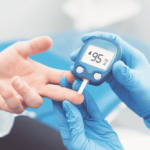Source: https://www.pexels.com/photo/ambulance-architecture-building-business-263402/
Internal bleeding is one of the most serious and potentially deadly outcomes of trauma. Usually, bleeding will occur because of obvious injuries that require immediate medical attention.
However, internal bleeding can occur after seemingly insignificant trauma or be delayed by several hours or days. Sometimes, internal bleeding caused by trauma will stop without any medical intervention; however, surgery may be needed if the bleeding continues or is severe.
If you suspect internal bleeding, there are a few things you must do right away. These things include:
- Avoid moving too much to keep the injury from getting worse
- Seek medical help at the scene of the accident or by going to the ER
- Follow the prescribed treatment from your doctor
- Contact an attorney The Tinker Law Firm PLLC if the injury occurred because of someone else’s fault
Now that you understand what to do if you suspect internal bleeding after an accident, it’s time to learn more about why this may occur and the symptoms to watch for.
Internal Bleeding Defined
Usually, internal bleeding occurs in different cavities or organs in the body. Some of the cavities that can experience internal bleeding include:
- Head
- Chest
- Abdomen
Tissues around the heart and your eyes are other areas where internal bleeding may occur. Unfortunately, this type of bleeding is not always immediate because you can’t see it. If you are in an automobile, slip and fall, or another type of accident, you may not be aware of this bleeding for a few hours or more.
The amount of bleeding also depends on the severity of the injury, the injury’s location, and how quickly you receive treatment.
Common Causes of Internal Bleeding After an Accident
Internal bleeding can occur because of an impact with something after or during an accident. In most cases, trauma or broken bones are the cause of internal bleeding after an accident. The type of trauma that will cause internal bleeding includes:
Blunt Trauma
This type of trauma occurs if a part of your body collides with another object, usually while traveling at high speed. When this happens, blood vessels in your body are crushed or torn by the blunt object or sheer force. Car accidents and falls can cause this.
Penetrating Trauma
Penetrating trauma occurs when a foreign object penetrates through the body and tears a hole in one or more of the blood vessels. This may occur during a car accident or if you fall onto something sharp. It’s worth noting that blood vessels or organs can experience damage because of trauma, resulting in internal bleeding.
Source: https://www.pexels.com/photo/a-broken-windshield-of-a-car-2265634/
Common Symptoms of Internal Bleeding
When an accident occurs that results in trauma, broken bones, or fractures, then internal bleeding is possible. Even seemingly minor accidents can cause cases of internal bleeding, which means you need to watch for symptoms of this. Also, remember the symptoms you experience depend on where the bleeding is located.
Head Injuries and Internal Bleeding
If you experience trauma to your head, intracranial bleeding may cause pain; however, this is not always what happens. Some of the other signs of internal bleeding due to head trauma include:
- Loss of vision
- Altered mental states
- Slurred speech
- Headaches
- Weakness
- Stiff neck
- Coma
- Confusion
The Abdomen and Internal Bleeding
If you suffer internal bleeding in your abdomen, it may be due to the compression of your vital organs. Signs of this injury include:
- Tarry or black stool
- Vomiting bright red blood
- Shortness of breath
- Vomit that looks like coffee grounds
- Lightheadedness
- Weakness
- Shock
- Bruising of the abdomen
- Rigid or hard abdomen when touched
- Pain
- Fatigue
- Low blood pressure
Muscle Injuries and Internal Bleeding
If you suffer internal bleeding because of muscle injuries, you may experience:
- Loss of sensation
- Pain
- Issues moving a joint
- Broken bones in the forearm or shin
Treatment Options for Internal Bleeding Caused By Trauma
Internal bleeding can damage your body in several ways. It causes issues due to blood loss and the pressure exerted by the misplaced blood on your other tissues and organs. Usually, treatment for internal bleeding will occur in a hospital’s emergency room.
Blood transfusions and intravenous fluids may be given to help prevent or correct issues that result in a drop in blood pressure. The doctor may also order imaging tests, such as a CT scan or ultrasound, to determine if internal bleeding is present. At this point, the treating physician will consider the severity of the internal bleeding and the injured person’s blood pressure to determine what treatment to pursue.
If internal bleeding is delayed or slow, observation may be required at first. In some situations, internal bleeding caused by trauma will stop without medical intervention.
For severe or ongoing cases of internal bleeding because of trauma from an accident, surgery may be required. If the bleeding is bad enough when you arrive at the ER, you may go into surgery within minutes of arriving at the hospital. Surgery options for internal bleeding include:
- Exploratory laparotomy
- Thoracotomy
- Craniotomy
What Happens if You Don’t Seek Medical Treatment for Internal Bleeding After an Accident?
The damage to your body caused by internal bleeding depends on where the bleed is located. If large amounts of blood are allowed to collect in parts of your body for a long time, it could cause more problems. Even smaller amounts of blood in the brain may result in severe issues and death. That’s why it is so important to seek treatment if you suspect internal bleeding.
Seeking care after an accident that causes trauma is a must to minimize the possibility of long-term damage resulting from an accident. The longer you wait to seek care, the more serious the problem will get.
Being informed and following the four steps outlined above after an accident will help you determine if you have internal bleeding and ensure you take the needed steps to prevent serious or long-term issues.
The Editorial Team at Healthcare Business Today is made up of skilled healthcare writers and experts, led by our managing editor, Daniel Casciato, who has over 25 years of experience in healthcare writing. Since 1998, we have produced compelling and informative content for numerous publications, establishing ourselves as a trusted resource for health and wellness information. We offer readers access to fresh health, medicine, science, and technology developments and the latest in patient news, emphasizing how these developments affect our lives.







